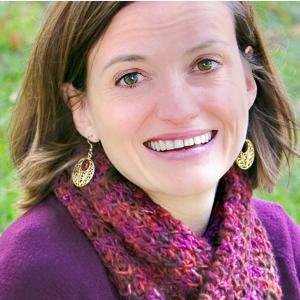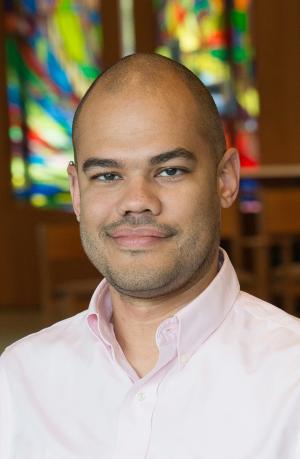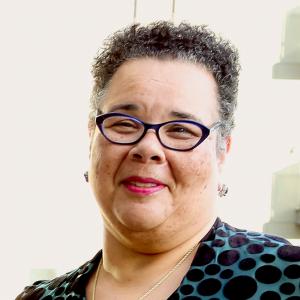Resources

“So, if anyone tells you to go to hell,” I say to my students, “you can say, ‘that’s fine—because Jesus has already been there, so I won’t be alone.’” When I started teaching theology at Columbia Seminary nearly twenty years ago, nobody told me that I needed to talk about hell. And for many years I barely mentioned it. In my own formation, from Sunday school through doctoral studies, the threat of hell had been either a quaint theological fragment of an earlier era, or a harmful piece of proclamation from Other Christians. It was not a pressing concern of the contemporary theologians I engaged, and it was not even a major topic for classical theologians like John Calvin. Like James Cone, I was more concerned about living conditions that might be called “hell on earth” than about any future state of punishment. The one place I did address hell was in connection with Jesus’ “descent into hell” (as affirmed in the Apostles’ Creed). Students wondered what in the world this might mean. It regularly prompted discussions between students who were familiar with this line and those whose churches had deleted it. “Do you ‘descend into hell’?” I began to ask my classes early on when we came to the topic. Students tended to have strong opinions. Ruminations on the presence or absence of hell in the creed led me to discover startling good news in this affirmation, in two ways: To say that the human Jesus of Nazareth experienced not only physical death, but the fullness of spiritual alienation from God—and to affirm that this same human is also one with God—is to affirm that God in Jesus somehow enters the depth of human suffering. There is nothing in human experience, not even hell, that is bereft of the presence of God. It’s Romans 8:38-39 all over again. The descent into hell is not the final word. As the ancient image of the “harrowing of hell” and the common Orthodox anastasis icon portrays it, Jesus descends into hell and then draws up those who are dead into new life. Those in Hades are now joined with Christ in resurrection. I would not have reached this recognition of the good news of Jesus’ descent into hell without following the questions of students. But for many years, this is all I said about hell in Theology 1 and 2. That changed recently, as students began to ask new questions. A couple of years ago, toward the end of the second semester of theology, my co-teacher Tim Hartman and I were talking about Christian faith in a world of religious diversity, and several students were troubled. “We have been taught our whole lives that if you do not accept Jesus Christ and confess him as savior, you are going to hell,” they noted. “Why have we not talked about hell all year?” Tim and I paused. When our classroom had been majority white, I had avoided this topic because I did not think it was important—and no one had questioned that choice. Now that our classroom includes a majority of students from communities that have been minoritized because of race or sexuality (or both), the question resounds differently. We decided to make a change. This year, we added some readings about hell in connection with our discussion of salvation. Engaging this conversation directly enabled students to interrogate what they meant by this term, and how it was related to the gospel. Is “salvation” solely an individual matter, as popular visions of hell seem to suggest? Or is it communal, concerned for the well-being of all people and the whole world? Are heaven and hell actual locations, and if so, what does that mean? What does “hell” suggest about the relation of bodies and souls—are we talking about “souls” going somewhere after death? Focusing on hell also enabled us to wrestle afresh with Calvin’s doctrine of double predestination, in which eternal damnation is not the main point, but is a logical consequence of God’s eternal decree. Not many people (including me) wanted to defend Calvin on this point, but how does hell acknowledge the reality of God’s righteousness, and the significance of human responsibility? And finally, how has teaching about hell functioned in our churches, particularly in ways that harm people who do not conform to social norms? When we followed our students’ questions and made room for conversation about hell, it defused the concerns about its absence. Hell, actually became a fruitful part of a larger whole. So, here’s the takeaway: Following the surprising questions of students, even into hell, led to my own deeper discovery of the good news of a topic that I had previously avoided. How might attention to other student questions similarly open new vistas of discovery in the theology classroom?
Scholarly careers are not linear or tidy. Hear about helpful tools for career management like: creating a map/plan for tenure process and promotion (6 year plan), having more than one mentor, knowing when to leave the first job and when to stay, finding conversation partners for career decisions.
Silhouette Podcast Interview with Mary Hess, Professor of Educational Leadership at Luther Seminary in St. Paul, MN.

Before March 2020, the seminary where I teach didn’t do much in the way of remote learning. Like many educators, my colleagues and I found ourselves rushing to take our teaching online at the same time that many of our students were taking courses remotely for the first time. My colleagues and I found this new mode of teaching terribly awkward. Most of them found that awkwardness frustrating. Not me, though. I was gifted from childhood with a certain awkwardness. It’s cozy. Still, the awkwardness of remote learning wasn’t the only concern being raised in faculty meetings, especially as we were discerning the extent to which we would offer remote learning going forward. That awkwardness was increasingly framed as the consequence of a claim that had more weight behind it in conversations about theological education: that remote learning was disembodied. It seems obvious. When teachers and students aren’t in the same space, but instead find our interactions mediated by a screen and who knows how many miles of cables or electromagnetic waves of various sorts, our teaching and learning are necessarily disembodied. We lose the nonverbal feedback on which we so often rely in conversation. The flow of our class discussions becomes awkward, either with one person talking over another or with everyone raising their virtual or physical hands and waiting just a little too long to be called on. It is difficult to keep students’ attention for hours on end if we aren’t physically in person, and it’s hard to foster that sense of classroom community that often grows over the course of a term. It seems obvious that remote learning is necessarily disembodied learning… but that’s not actually the case. Everything we do, we do as creatures of flesh and blood, pain and pleasure, energy and fatigue. When our teaching and learning aren’t practiced in a shared physical space, they are nonetheless practiced in physical spaces that meaningfully impact our learning, in bodies that each have their own mix of needs and abilities. Our reception, processing, and expression of ideas are embodied processes, wherever our bodies happen to be in relation to one another. Intellectual, emotional, and spiritual engagement with teaching and learning happens within and between bodies. Remote learning is not necessarily disembodied. It just turns out that teaching techniques designed to harness one form of embodiment don’t always translate well to a significantly different form of embodiment. If we can accept that no teaching and learning are necessarily disembodied, but that they must be embodied differently, it is possible to turn what feels like disembodied teaching and learning into teaching and learning that are embodied in particularly meaningful ways. For those who—like me—continue to wonder just what it means to engage in embodied teaching at a distance, I offer three suggestions: Let go of the need for controlled learning environments in favor of precisely the kind of adaptability students will need in their own work. Consider how you might model and promote such adaptability in your teaching. Reflect on the value of people working in their everyday spaces (e.g., offices, homes), rather than the constructed space of the in-person classroom. Discern how you might invite people to treat their everyday spaces as spaces for learning just as they are, rather than as something out of which learning space must be carved. Re-commit to the truth that being embodied together in ways that promote rich learning—marked by equity no less than serious intellectual engagement—requires intentional practices of community formation, whether we’re in the same physical space or at a distance.
What is possible as you accept a new job? What kind of agency is needed to feel like you belong at hire?What does it mean to know your worth and value?
Learning to read institutional budgets, understand endowments, and be knowledgeable about financial reports will assist faculty persons.Being informed about your school’s financial picture is an aspect of personal wellness.

In junior high school, we were taught that all the sections of any assigned book were to be read. We were instructed that “good students” never overlook any section of the book. This point was reinforced when the answers to a few critical test questions came from the preface and introductory sections of the text. Most students, having overlooked those sections, missed the questions – thus forfeiting a grade of “A.” We learned, from this punitive experience, that all the sections of all the books were fair game. As I have learned to teach, I too have been interested in my adult learners taking notice of and appreciating the entire text – all the sections. While I am not interested in posing obscure questions on tests, I am interested in students getting in touch with all that any book has to offer. Authors take quite seriously the writing of the sections which come before the principal content. For many writers, much time and great effort is spent in the pages which precede the content. Writers are hoping that the front matter invites the reader into their work. From a publisher’s perspective, books are generally divided into three sections: front matter, principal text, and back matter. The front matter is the material at the front of the book that usually offers information about the book, about the author, about the author’s intent, and about the presumed audience. The front matter is not the principal text, but the “get ready” information for the principal text. The front matter is the author’s opportunity to set the tone for the readers’ experience. Reading the front matter is like watching the beginning ten to twelve minutes of a film. In these opening scenes, the film maker is establishing the pretext of the storyline with images, sounds, pace and rhythm to pique the viewers’ interest. Or the front matter is like the moments of boarding a roller coaster ride. It is like when we are being harnessed-in, then the thrill of the ever-so slow trip up the steep incline. Creating anticipation of the ride is what the front matter is about. In many of my courses, I would guide my students in lingering over the front matter. I wanted my students to have their appetites whetted. I wanted their anticipation to be heightened. During class sessions I would, with my students, review the provided front matter sections. I would rehearse all the sections: Copyright page, Dedication, Epigraph, Table of Contents, Foreword, Preface, Acknowledgements, Introduction – any pre-sections which the author had provided. Please know that as I am extolling the virtue of and necessity of front matter, I am not saying that the back matter should be overlooked or disregarded. The footnotes, endnotes, appendix, bibliography, and the index, are important. My experience is that students, when needed, find their way to those tools provided in the back matter. It is the tools of the front matter that I think need support for our students’ improved reading habits. As I reviewed the front matter with students, I would make sure they knew how to decipher the codes of the Copyright page (for many, this was their first experience knowing this code). I would call their attention to the Dedication as it usually provided a personal and loving note from the author. We would read the Epigraph and discuss whether the author was providing a summary, a counterexample, or was juxtaposing their work with a wider literary canon. I would ask – “To what is the author inviting the reader?” I would point out that the typeset design of the Table of Contents is meant to communicate as much as the listing of the chapter titles. “Read the design as much as you read the words,” I would say. We would read aloud the Forward, Preface, and Introduction then invite the students to compare-and-contrast the three sections. I would remind them that the author has free-range concerning the role, responsibility, and weight of each of these sections and each author decides how these sections will function as preliminary for the reading of the text. I would suggest that these sections tell us something important about how the author is thinking, and I would ask them to speculate or extrapolate what the author is promising. Sometimes, I would break the class into small groups to read and report back the role of each section or to report back a comparison of all sections. Finally, I would say – “We have saved the best for last!” The best way to understand the motivation of an author, the way to see into the author’s soul, is to read the Acknowledgements. Writing about an author’s gratitude is to write about one’s own heart. Acknowledgements provide glimpses into the writer’s process, and likely, insight into the writer’s project which, invariably, is bigger than the book at-hand. Some groups, by the end of the semester, began to ascertain that – for some authors - the promised book in the front matter was not the book in principal content. With these observations, I knew they had become better readers. Once students develop better reading habits they become better learners, better thinkers, and more able to understand the complexities and curiosities of other people as well as their own people. I discovered that taking time to teach adult students good reading habits is time well spent – for me and for them.
Healthy and career stability includes planning for the financial future and managing personal funds. Understanding TIAA, investments, and estate planning is part of faculty wellness.